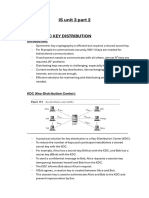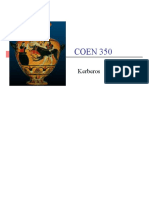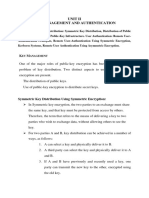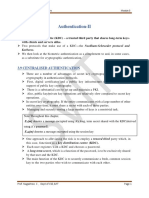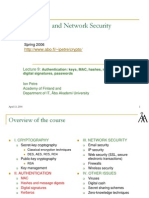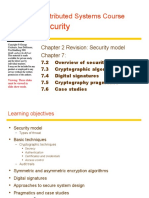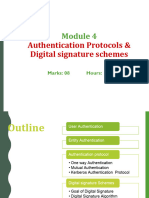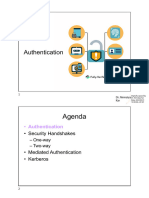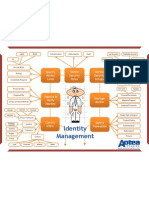0% found this document useful (0 votes)
22 views20 pagesComputer and Network Security - 5
This document discusses key management and certification, focusing on the role of a Key-Distribution Center (KDC) in establishing secure communication between parties using session keys. It explains various protocols for creating session keys, including the Needham-Schroeder and Otway-Rees protocols, and introduces Kerberos as a widely used authentication protocol that incorporates KDC functionalities. Additionally, it addresses the challenges of managing multiple KDCs and the evolution of Kerberos through its versions.
Uploaded by
2251101019Copyright
© © All Rights Reserved
We take content rights seriously. If you suspect this is your content, claim it here.
Available Formats
Download as PDF, TXT or read online on Scribd
0% found this document useful (0 votes)
22 views20 pagesComputer and Network Security - 5
This document discusses key management and certification, focusing on the role of a Key-Distribution Center (KDC) in establishing secure communication between parties using session keys. It explains various protocols for creating session keys, including the Needham-Schroeder and Otway-Rees protocols, and introduces Kerberos as a widely used authentication protocol that incorporates KDC functionalities. Additionally, it addresses the challenges of managing multiple KDCs and the evolution of Kerberos through its versions.
Uploaded by
2251101019Copyright
© © All Rights Reserved
We take content rights seriously. If you suspect this is your content, claim it here.
Available Formats
Download as PDF, TXT or read online on Scribd
/ 20



